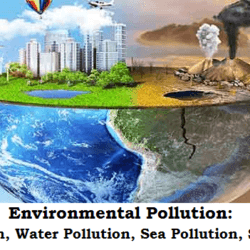Quiz-summary
0 of 23 questions completed
Questions:
- 1
- 2
- 3
- 4
- 5
- 6
- 7
- 8
- 9
- 10
- 11
- 12
- 13
- 14
- 15
- 16
- 17
- 18
- 19
- 20
- 21
- 22
- 23
Information
Please fill your name and email id to start the Quiz.
You have already completed the quiz before. Hence you can not start it again.
Quiz is loading...
You must sign in or sign up to start the quiz.
You have to finish following quiz, to start this quiz:
Results
0 of 23 questions answered correctly
Your time:
Time has elapsed
You have reached 0 of 0 points, (0)
Categories
- NCERT 0%
Well done! Keep practicing.
To see yourself in the leader board, click on ‘Send’ then ‘Show leaderboard’.
| Pos. | Name | Entered on | Points | Result |
|---|---|---|---|---|
| Table is loading | ||||
| No data available | ||||
- 1
- 2
- 3
- 4
- 5
- 6
- 7
- 8
- 9
- 10
- 11
- 12
- 13
- 14
- 15
- 16
- 17
- 18
- 19
- 20
- 21
- 22
- 23
- Answered
- Review
- Question 1 of 23
1. Question
Category: NCERTWhich of the following statements is incorrect for metal?
CorrectIncorrect - Question 2 of 23
2. Question
Category: NCERTWhich of the following statements are true about metalloid?
1. Boron is a metalloid.
2. They are semi conductive in nature.
Choose the correct optionCorrectMetalloids are a very small group of elements found in the periodic table of elements along the zig-zag line that distinguishes metals from non-metals and is drawn from between boron and aluminium to the border between polonium and astatine.
Metalloids have properties that are intermediate between metals and non-metals. They have properties that are difficult to characterize.
IncorrectMetalloids are a very small group of elements found in the periodic table of elements along the zig-zag line that distinguishes metals from non-metals and is drawn from between boron and aluminium to the border between polonium and astatine.
Metalloids have properties that are intermediate between metals and non-metals. They have properties that are difficult to characterize.
- Question 3 of 23
3. Question
Category: NCERTThe process behind disappearing of naphthalene balls with time is known as:
CorrectSublimation is the transition of a substance from the solid phase to the gaseous phase without changing into the liquid phase.
IncorrectSublimation is the transition of a substance from the solid phase to the gaseous phase without changing into the liquid phase.
- Question 4 of 23
4. Question
Category: NCERTTincture of iodine refers to:
CorrectIodine is a powerful antiseptic. Tincture of Iodine is a 2-3 per cent Solution in alcohol- water mixture and applied on wounds.
IncorrectIodine is a powerful antiseptic. Tincture of Iodine is a 2-3 per cent Solution in alcohol- water mixture and applied on wounds.
- Question 5 of 23
5. Question
Category: NCERTConsider the following statements?
1. A process known as centrifugation is used to separate butter from curd.
2. A process known as evaporation is used to separate salt from sea water.
Which of the above statements are incorrect?CorrectA process known as centrifugation is used to separate butter from curd. Evaporation technique is used to separate salt from seawater. Distillation causes water to evaporate leaving solid salt behind, hence the production of salt.
IncorrectA process known as centrifugation is used to separate butter from curd. Evaporation technique is used to separate salt from seawater. Distillation causes water to evaporate leaving solid salt behind, hence the production of salt.
- Question 6 of 23
6. Question
Category: NCERTWhich of the following will show the “Tyndall effect”?
CorrectThe Tyndall effect is the phenomenon in which the particles in a colloid scatter the beams of light that are directed at them. This effect is exhibited by all colloidal solutions and some very fine suspensions. A Colloid is an intermediate between Solution and suspension.
A Colloid is an intermediate between Solution and suspension.
IncorrectThe Tyndall effect is the phenomenon in which the particles in a colloid scatter the beams of light that are directed at them. This effect is exhibited by all colloidal solutions and some very fine suspensions. A Colloid is an intermediate between Solution and suspension.
A Colloid is an intermediate between Solution and suspension.
- Question 7 of 23
7. Question
Category: NCERTConsider the following:
1. Lysosomes are a kind of waste disposal system of the cell.
2. Mitochondria have their own DNA and ribosomes.
Which of the above are correct?CorrectLysosomes help to keep the cell clean by digesting any foreign material as well as worn-out cell organelles. Lysosomes are able to do this because they contain powerful digestive enzymes capable of breaking down all organic material.
Mitochondria are known as the powerhouses of the cell. The energy required for various chemical activities needed for life is released by mitochondria in the form of ATP (Adenosine Triphopshate) molecules. ATP is known as the energy currency of the cell.
Mitochondria are strange organelles in the sense that they have their own DNA and ribosomes. Therefore, mitochondria are able to make some of their own proteins.
IncorrectLysosomes help to keep the cell clean by digesting any foreign material as well as worn-out cell organelles. Lysosomes are able to do this because they contain powerful digestive enzymes capable of breaking down all organic material.
Mitochondria are known as the powerhouses of the cell. The energy required for various chemical activities needed for life is released by mitochondria in the form of ATP (Adenosine Triphopshate) molecules. ATP is known as the energy currency of the cell.
Mitochondria are strange organelles in the sense that they have their own DNA and ribosomes. Therefore, mitochondria are able to make some of their own proteins.
- Question 8 of 23
8. Question
Category: NCERTConsider the following statements:
1. Xylem can transport in both an upward and downward direction, while Phloem can transport only in upwards direction.
2. Xylem transports water and minerals while Phloem transports food and nutrients.
Which of the statements given above is/are correct?CorrectWater and minerals are transport from roots to aerial parts of the plant by Xylem. Phloem is unlike xylem in that materials can move in both directions in it. Phloem transports food from leaves to other parts of the plant.
Transport of food and nutrients such as sugar and amino acids from leaves to storage organs and parts of plants done by Phloem. This movement of substances is called translocation.
IncorrectWater and minerals are transport from roots to aerial parts of the plant by Xylem. Phloem is unlike xylem in that materials can move in both directions in it. Phloem transports food from leaves to other parts of the plant.
Transport of food and nutrients such as sugar and amino acids from leaves to storage organs and parts of plants done by Phloem. This movement of substances is called translocation.
- Question 9 of 23
9. Question
Category: NCERTThe term parthenogenesis refers to
CorrectParthenogenesis is a fascinating form of reproduction in which an organism develops from an unfertilized egg, meaning no male gamete (sperm) is involved.
IncorrectParthenogenesis is a fascinating form of reproduction in which an organism develops from an unfertilized egg, meaning no male gamete (sperm) is involved.
- Question 10 of 23
10. Question
Category: NCERTWhich of the following are classified as micronutrients for plants?
1. Iron
2. Potassium
3. Sulphur
4. Copper
Select the Solution using the codes below.CorrectThere are 16 elements essential to growth of crop plants:
- Supplied by air and water: carbon, hydrogen, oxygen
- Macronutrients: nitrogen, phosphorous, potassium (NPK)
- Secondary Nutrients: calcium, magnesium, sulphur
- Micronutrients: boron, chlorine, copper, iron, manganese, Molybdenum and zinc
IncorrectThere are 16 elements essential to growth of crop plants:
- Supplied by air and water: carbon, hydrogen, oxygen
- Macronutrients: nitrogen, phosphorous, potassium (NPK)
- Secondary Nutrients: calcium, magnesium, sulphur
- Micronutrients: boron, chlorine, copper, iron, manganese, Molybdenum and zinc
- Question 11 of 23
11. Question
Category: NCERTA body is falling freely under the action of gravity alone in a vacuum. Which one of the following is correct?
CorrectAs it falls, its potential energy will change into kinetic energy (1/2mv^2).
IncorrectAs it falls, its potential energy will change into kinetic energy (1/2mv^2).
- Question 12 of 23
12. Question
Category: NCERTArrange the following atomic particles in decreasing order of their respective atomic weights:
1. Electron
2. Proton
3. Neutron
Select the Solution using the code given below.CorrectNeutron is the heaviest of all atomic particles.
IncorrectNeutron is the heaviest of all atomic particles.
- Question 13 of 23
13. Question
Category: NCERTArrange the following mediums in the increasing order of speed of sound in them at 25 degree Celsius.
1. Steel
2. Water
3. AirSelect the Solution using the code given below.
CorrectGenerally, the speed of sound decreases when we go from solid to gaseous state.
IncorrectGenerally, the speed of sound decreases when we go from solid to gaseous state.
- Question 14 of 23
14. Question
Category: NCERTWhich of the following pairs are correctly matched?
Micro-organism Food Process
1. Bacteria : Curdling of Milk
2. Yeast : Bread leavening3. Fungi : Citric Acid production
Select the Solution using the code given below.
CorrectCitric acid is the principal organic acid found in citrus fruits. To meet increasing demands, it is produced from carbohydrate feedstock by fermentation with the fungus Aspergillus Niger and the yeasts of Candida.
IncorrectCitric acid is the principal organic acid found in citrus fruits. To meet increasing demands, it is produced from carbohydrate feedstock by fermentation with the fungus Aspergillus Niger and the yeasts of Candida.
- Question 15 of 23
15. Question
Category: NCERTWhich of the following diseases are caused by protozoans?
1. Measles
2. Malaria
3. Diphtheria
Select the Solution using the code given below.CorrectMeasles is a highly contagious infectious disease caused by the virus and Diphtheria is caused by bacteria.
IncorrectMeasles is a highly contagious infectious disease caused by the virus and Diphtheria is caused by bacteria.
- Question 16 of 23
16. Question
Category: NCERTWhich of the following are functions of blood?
1. Supply of carbon dioxide to living cells
2. Transportation of hormones to body parts
3. Supply of water to body parts
Select the Solution using the code given below.Correct<h3>1. <strong>Transport</strong></h3> <ul> <li><strong>Oxygen & Carbon Dioxide:</strong> Red blood cells carry oxygen from the lungs to tissues and return carbon dioxide back to the lungs.</li> <li><strong>Nutrients:</strong> Transports glucose, amino acids, fatty acids, and vitamins to cells.</li> <li><strong>Waste Products:</strong> Carries urea and other metabolic wastes to kidneys for excretion.</li> <li><strong>Hormones & Enzymes:</strong> Delivers chemical messengers from endocrine glands to target organs.</li> </ul> <h3> 2. <strong>Protection</strong></h3> <ul> <li><strong>Immune Defense:</strong> White blood cells fight infections and produce antibodies.</li> <li><strong>Clotting (Hemostasis):</strong> Platelets and clotting factors help seal wounds and prevent blood loss.</li> </ul> <h3>3. <strong>Regulation</strong></h3> <ul> <li><strong>Body Temperature:</strong> Distributes heat to maintain optimal internal temperature.</li> <li><strong>pH Balance:</strong> Maintains pH through buffers like bicarbonates.</li> <li><strong>Fluid Balance:</strong> Regulates water content in tissues through plasma proteins and electrolytes.</li> </ul>
Incorrect<h3>1. <strong>Transport</strong></h3> <ul> <li><strong>Oxygen & Carbon Dioxide:</strong> Red blood cells carry oxygen from the lungs to tissues and return carbon dioxide back to the lungs.</li> <li><strong>Nutrients:</strong> Transports glucose, amino acids, fatty acids, and vitamins to cells.</li> <li><strong>Waste Products:</strong> Carries urea and other metabolic wastes to kidneys for excretion.</li> <li><strong>Hormones & Enzymes:</strong> Delivers chemical messengers from endocrine glands to target organs.</li> </ul> <h3> 2. <strong>Protection</strong></h3> <ul> <li><strong>Immune Defense:</strong> White blood cells fight infections and produce antibodies.</li> <li><strong>Clotting (Hemostasis):</strong> Platelets and clotting factors help seal wounds and prevent blood loss.</li> </ul> <h3>3. <strong>Regulation</strong></h3> <ul> <li><strong>Body Temperature:</strong> Distributes heat to maintain optimal internal temperature.</li> <li><strong>pH Balance:</strong> Maintains pH through buffers like bicarbonates.</li> <li><strong>Fluid Balance:</strong> Regulates water content in tissues through plasma proteins and electrolytes.</li> </ul>
- Question 17 of 23
17. Question
Category: NCERTThe human voices are more clearly heard at dusk rather than during daytime because of the phenomenon of
CorrectDuring the day, the air near the ground is warmer than the air above. Sound travels faster in warm air, so it bends upward, away from our ears due to Refraction.
IncorrectDuring the day, the air near the ground is warmer than the air above. Sound travels faster in warm air, so it bends upward, away from our ears due to Refraction.
- Question 18 of 23
18. Question
Category: NCERTConsider the following statements:
1. Bromine is the only non-metal which is liquid at room temperature.
2. Iodine is a lustrous non-metal.
3. Mercury is the only metal that occurs as liquid at room temperature.
Which of the statements given above are correct?CorrectIncorrect - Question 19 of 23
19. Question
Category: NCERTWhich among the following phenomena explains the fact that we see lightning much before we hear its thunder?
CorrectLight waves are many times faster than sound waves. Hence, when there is lightning, the light waves reach us faster than the sound waves.
IncorrectLight waves are many times faster than sound waves. Hence, when there is lightning, the light waves reach us faster than the sound waves.
- Question 20 of 23
20. Question
Category: NCERTWhich among the following can be the causes of cancer?
1. Non-Ionizing Radiation
2. Virus
3. Tobacco
Select the Solution using the code given below.Correct<h3><strong>Genetic Factors</strong></h3> <ul> <li>Inherited mutations (e.g. <em>BRCA1/BRCA2</em> genes in breast and ovarian cancer)</li> <li>Family history of cancer increases risk</li> </ul> <h3><strong>Environmental & Lifestyle Causes</strong></h3> <ul> <li><strong>Tobacco smoke:</strong> Major cause of lung, throat, mouth, and bladder cancers</li> <li><strong>Alcohol consumption:</strong> Linked to liver, breast, and digestive tract cancers</li> <li><strong>Diet & obesity:</strong> High-fat, low-fiber diets and excess weight increase risk</li> <li><strong>Physical inactivity:</strong> A sedentary lifestyle may contribute to cancer risk</li> </ul> <h3><strong>Carcinogens (Cancer-Causing Substances)</strong></h3> <ul> <li><strong>Chemicals:</strong> Asbestos, benzene, formaldehyde</li> <li><strong>Radiation:</strong> UV rays (sunlight), ionizing radiation (like X-rays)</li> <li><strong>Pollution:</strong> Airborne particles and industrial waste exposure</li> </ul> <h3><strong>Biological Agents</strong></h3> <ul> <li><strong>Viruses:</strong> HPV (cervical cancer), Hepatitis B & C (liver cancer), Epstein–Barr virus (certain lymphomas)</li> <li><strong>Bacteria & parasites:</strong> <em>H. pylori</em> is linked to stomach cancer</li> </ul> <h3><strong>Hormonal and Immune System Factors</strong></h3> <ul> <li>Hormone therapy or imbalances (e.g. estrogen and breast cancer)</li> <li>A weakened immune system can increase susceptibility</li> </ul>
Incorrect<h3><strong>Genetic Factors</strong></h3> <ul> <li>Inherited mutations (e.g. <em>BRCA1/BRCA2</em> genes in breast and ovarian cancer)</li> <li>Family history of cancer increases risk</li> </ul> <h3><strong>Environmental & Lifestyle Causes</strong></h3> <ul> <li><strong>Tobacco smoke:</strong> Major cause of lung, throat, mouth, and bladder cancers</li> <li><strong>Alcohol consumption:</strong> Linked to liver, breast, and digestive tract cancers</li> <li><strong>Diet & obesity:</strong> High-fat, low-fiber diets and excess weight increase risk</li> <li><strong>Physical inactivity:</strong> A sedentary lifestyle may contribute to cancer risk</li> </ul> <h3><strong>Carcinogens (Cancer-Causing Substances)</strong></h3> <ul> <li><strong>Chemicals:</strong> Asbestos, benzene, formaldehyde</li> <li><strong>Radiation:</strong> UV rays (sunlight), ionizing radiation (like X-rays)</li> <li><strong>Pollution:</strong> Airborne particles and industrial waste exposure</li> </ul> <h3><strong>Biological Agents</strong></h3> <ul> <li><strong>Viruses:</strong> HPV (cervical cancer), Hepatitis B & C (liver cancer), Epstein–Barr virus (certain lymphomas)</li> <li><strong>Bacteria & parasites:</strong> <em>H. pylori</em> is linked to stomach cancer</li> </ul> <h3><strong>Hormonal and Immune System Factors</strong></h3> <ul> <li>Hormone therapy or imbalances (e.g. estrogen and breast cancer)</li> <li>A weakened immune system can increase susceptibility</li> </ul>
- Question 21 of 23
21. Question
Category: NCERTThe atmosphere of the earth is heated by radiations which are mainly:
CorrectEarth absorb radiation from sun, and then try to transmit it back to atmosphere, but atmosphere absorb very selective gas as a result of which the gas radiated get back to earth resulting in increase in temperature.
IncorrectEarth absorb radiation from sun, and then try to transmit it back to atmosphere, but atmosphere absorb very selective gas as a result of which the gas radiated get back to earth resulting in increase in temperature.
- Question 22 of 23
22. Question
Category: NCERTLiquified Petroleum Gas (LPG) is largely composed of
1. Methane2. Ethylene
3. Propane
4. ButaneSelect the Solution using the codes below.
CorrectLiquified Petroleum Gas (LPG) consists mainly of propane, propylene, butane, and butylene in various mixtures.
IncorrectLiquified Petroleum Gas (LPG) consists mainly of propane, propylene, butane, and butylene in various mixtures.
- Question 23 of 23
23. Question
Category: NCERTConsider the following statements:
1. The blue colour of the sky is due to scattering of light by dust and water droplets present in the atmosphere.
2. The reddish appearance of the Sun during sunset and sunrise is due to the least scattered light reaching our eyes.
Which of the statements given above is/are correct?CorrectThe scattering of light takes place when the size of the scattering object is tiny as compared to the wavelength of light.
IncorrectThe scattering of light takes place when the size of the scattering object is tiny as compared to the wavelength of light.

 Home
Home Syllabus
Syllabus Contact Us
Contact Us





Nice questions for revision purpose